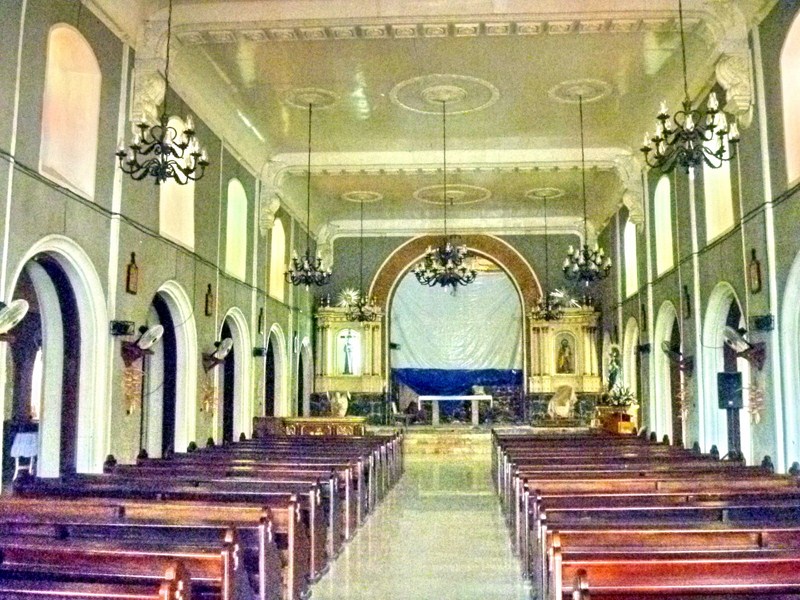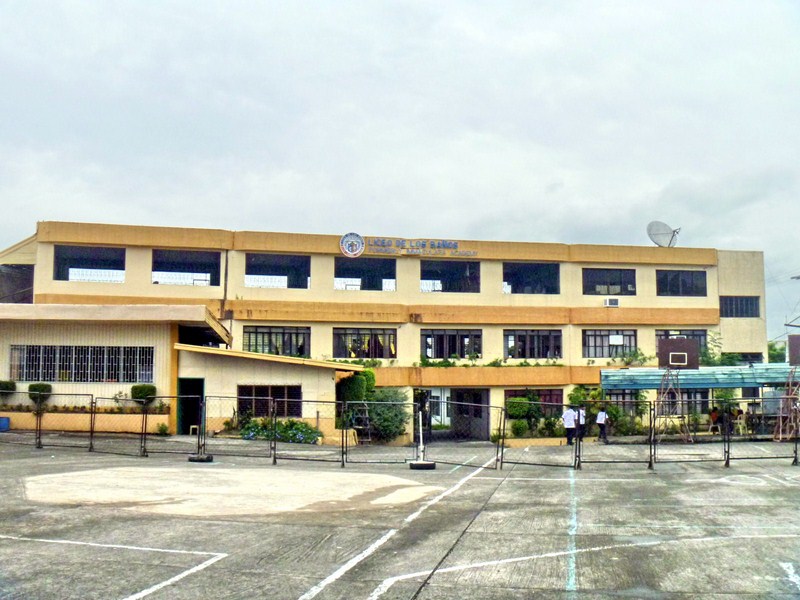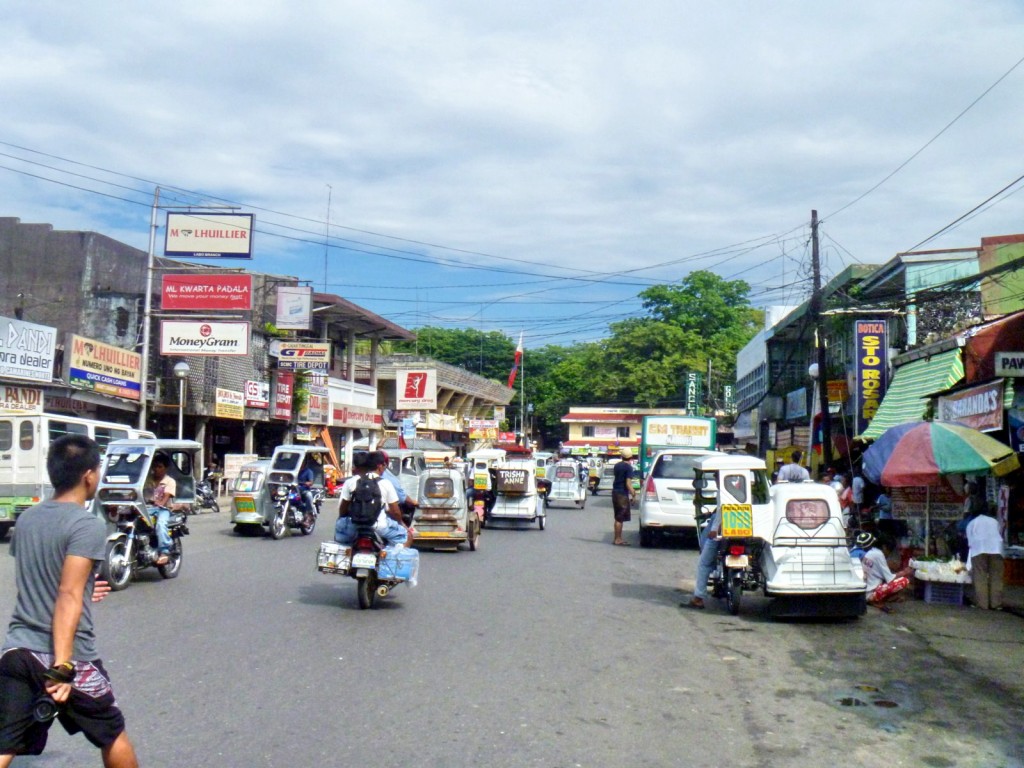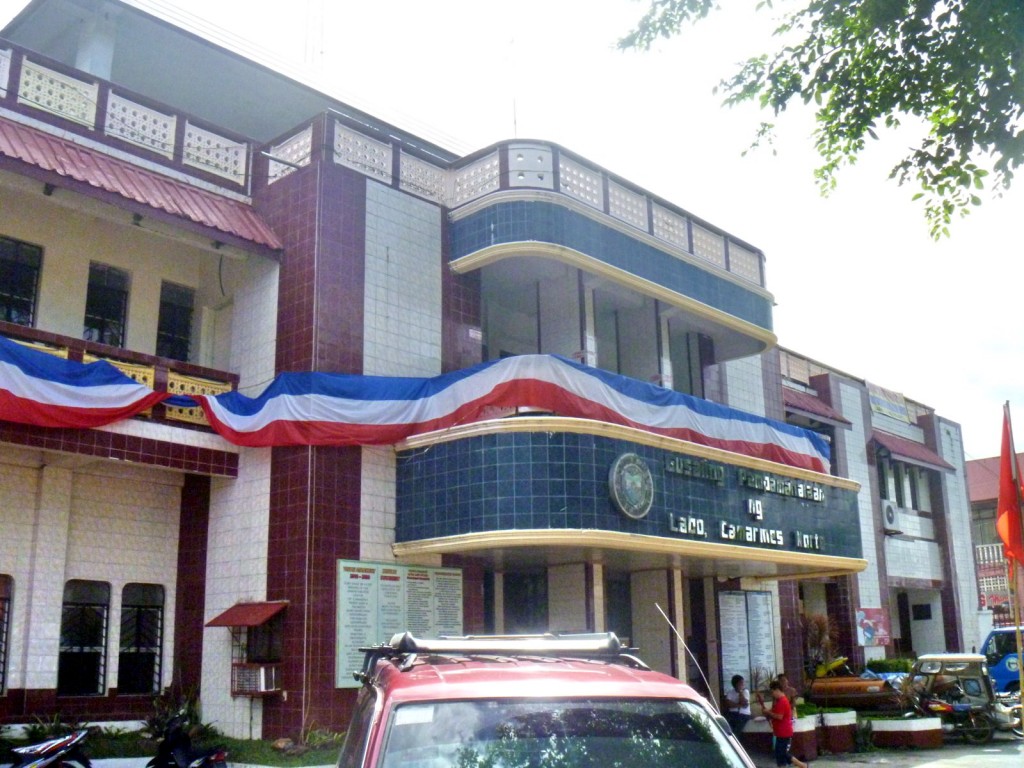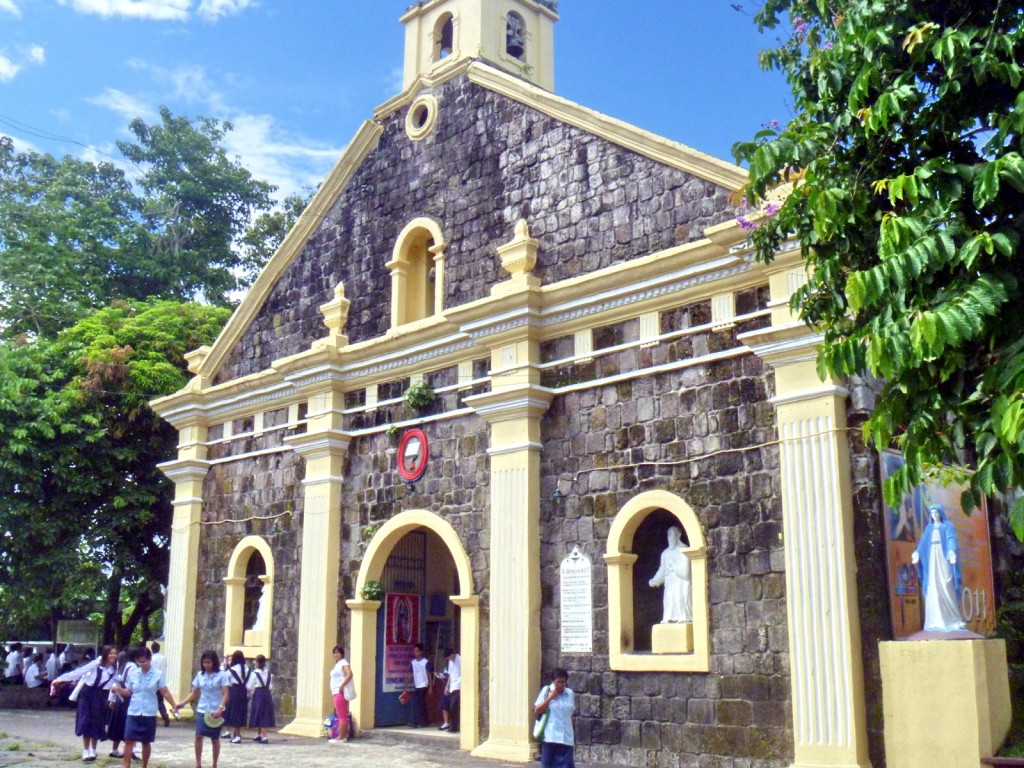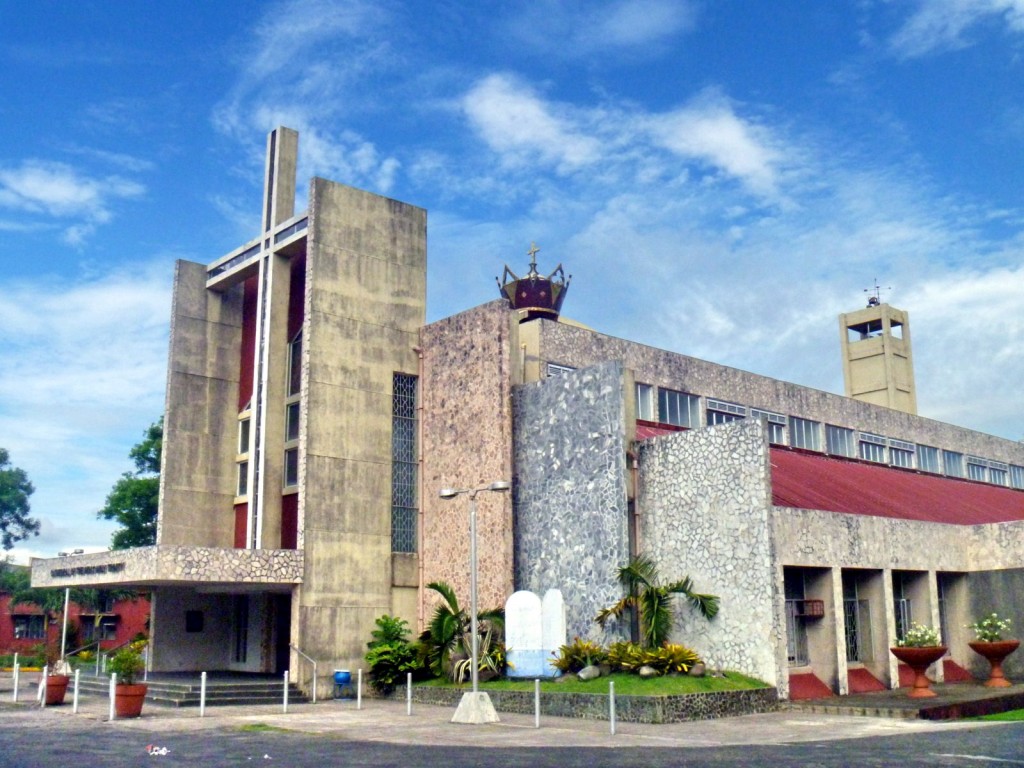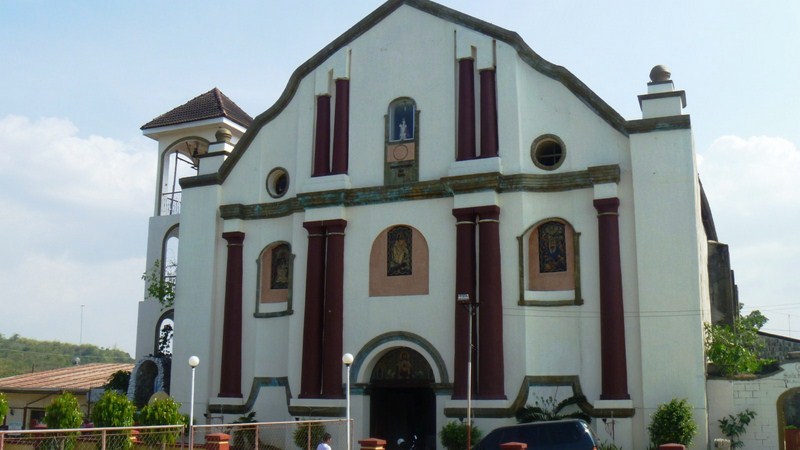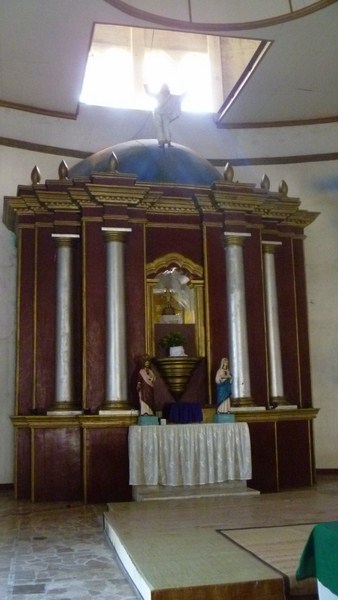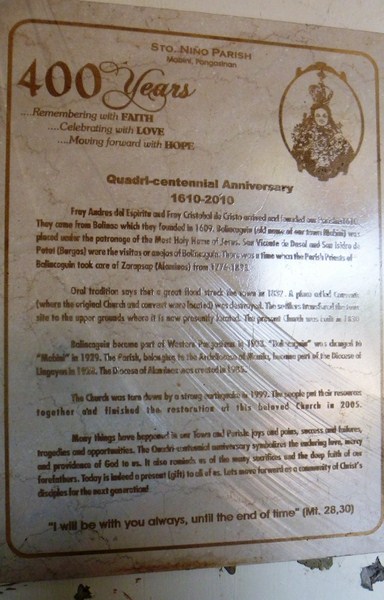The town’s first church (Visita de Sta. Ana de Sapa) was a chapel made of light materials near the shores of Laguna de Bay dedicated to its patron saint, John the Baptist.
Due to frequent flooding from the shores of Laguna de Bay, it was transferred by Jesuit Fr. Pedro Chirino (who documented the Tagalog language as well as the way of life of Filipinos from his interactions with the inhabitants, forming the basis for his book Relación de las Islas Filipinas) to its present site, a higher location in a hill which called San Juan del Monte where the parish has remained to this day.
The town’s church, started in 1599 and completed in 1601, was considered to be the first church built by the Jesuits out of stone outside Manila.
In 1630, a larger church was constructed by Fr. Juan de Salazar. In 1632, a typhoon blew away the roofing of the new church, which was soon replaced with the help of the townspeople.

Bas-relief of Crossed Keys. The two symbolic keys form a St. Andrew’s Cross. These keys appear on the coat-of-arms of the Holy See,Vatican City and of every pope since the 12th century.
In 1639, the church sustained significant damage when the Chinese, during their revolt against Spanish authorities, set fire to the church.

Bas-relief of a cross between two lambs. The lambs represent the faithful coming to Christ (represented by the Cross)
St. Pedro Calungsod (the second Filipino declared as a saint by the Catholic Church) once served as an altar boy in the church in 1666 and then serving as assistant to Blessed Diego Luis de San Vitores in the Marianas in 1672 (when both were martyred). In 1768 (under secular priests) and 1864 (under Augustinian Recollects), additional works were made to the church.
During the Philippine–American War, both the church and the convent were reduced to ruins. After the war, the church was reconstructed. Massive renovations in the 1970s left very little of the original Classic façade.
The present church, built with concrete, shows no traces of the old Jesuit church. In 1992, the National Historical Institute (NHI), now the National Historical Commission of the Philippines (NHCP), unveiled a historical marker in the church.
AUTHOR’S NOTES:
The church’s Early Renaissance facade has three levels of superpositioned, fluted pilasters (the first level is Doric and the other two Ionic). The first level has a semicircular arch main door with canopy (a later addition), with a semicircular arch statued niche above it and along the flanks.
The walls of the second and third levels are decorated with pairs of huge bas-reliefs of the Crossed Keys and a Cross between two lambs and one of the Holy Eucharist. The triangular pediment, topped by a cross, is lined with dentils.
The four-storey square bell tower, on the right side of the church, has semicircular arch windows and is topped by a pyramidal roof. On the left side of the church is a huge statue of St. John the Baptist.
Church of St. John the Baptist: J. Sumulong St., Brgy. San Isidro, Taytay, Rizal. View Map>>> Tel: (632) 8658-6489. Feast of St. John the Baptist: June 24.
How to Get There: Taytay is located 23.4 kms. from Manila and kms. (a drive) from Antipolo City.












.jpg)

